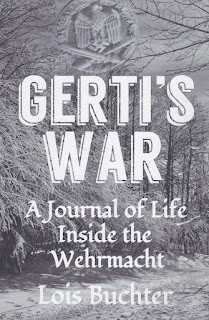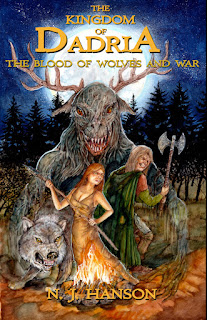"Gerti's War: A Journal Of Life Inside The Wehrmacht" ($16.99 in paperback from Evershine Press; also for Amazon Kindle) is a memorial to the courage of a young woman, who at age 14 in 1938, adoring her Papa, Mutti, and older brother Rolf, finds Hitler's propaganda creeping into every area of her life. "We have a new teacher who makes us stand and say 'Heil Hitler' every time she enters or leaves the room," Gerti tells her mother; "I don't like her."
The Nazi Party is reshaping German life, in big and small ways. "Red swastika flags stand outside our school and in front of the city offices. Political posters decorate the train station depicting Hitler as a lover of children." She and best friend Marta are hauled into the principal's office "where we were threatened with expulsion from school for pacifist troublemaking."
Such "troublemaking" puts Gerti's whole family at risk; as the war effort expands the reader senses her growing awareness of the dangers of dissent. Rolf dies of pneumonia at 17 after saving a boy about to drown in frigid waters, yet Rolf's hope for a better future than offered by Hitler Youth spurs Gerti to start a journal.
For Gerti, Memorial Day is a sad affair, especially after overhearing her Papa being pressured to join the Party or else, and seeing Storm Troopers standing outside a Jewish-owned business telling people not to shop there.
The story takes Gerti through 1948 and then brings readers up to date as of 1993. Gerti had fallen in love with Sigmund (Sigi) and yet they were parted, seemingly forever, and she marries Hugo Zimmermann. But after Hugo dies, there is an almost miraculous reunion with Sigi—and the rest, of course, is for the reader to savor.




